Temples
Can the Church be a temple or a temple a Church?
The English word "temple" derives from Latin templum, which was originally not the building itself, but a sacred space surveyed and plotted ritually. Today we associate a temple with the buildings that have survived through history.
What were their real purpose? Are other buildings like these temples serving government purposes or religious purposes?
Or are they one in the same?
What is the difference between public and private welfare?
What were they doing in what we call pagan temples?
And who is doing the same thing now?
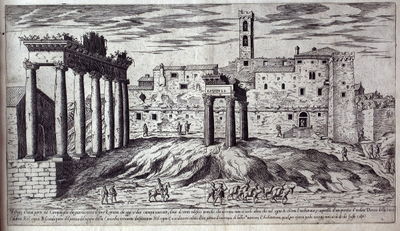
Temple of Saturn - Bureau of Vital Statistics. Parents where required to get newborns registered (birth certificate) within 30 days at the Temple of Saturn so that everyone would know when the children reached the age to receive benefits.
- The "Aerarium Stabulum" or treasure-house was the public treasury in Rome. It was used to store monies and record accounts of the state finances, copies of public laws engraved on brass plates, a record of the decrees of the Senate and other public registries, letters of credence from foreign diplomats and even the standards of the legions. These public treasures, records and accounts were all deposited on the eastern slope of the Capitoline hill within the temple of Saturn at the Forum Romanum containing several important ancient government buildings at the center of the city of Rome.
- The "Aerarium sanctius" was a special reserve fund, also in the temple of Saturn. It was maintained by free contributions of Generals but eventually by a 5% tax on the value of all manumitted slaves. This source of revenue was established by a lex Manila in 357 B.C. and was the equivalent of an unemployment tax. The sanctius meant it was not to be touched except in dire circumstances.
- "This unique temple of Saturn constitutes one of the oldest cult places of Rome. Before its foundation there had been a very ancient altar and temple itself was said to have been founded in around 497 BC." Inconsistencies in Greek and Roman Religion: Transition and Reversal in Myth and Ritual. Tome II By H. S. Versnel
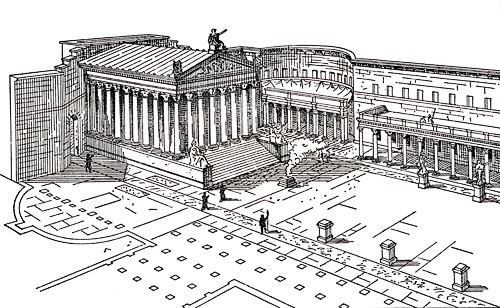
In The Temple of Mars Ultor Augustus established the "Aerarium militare" in AD 6 as well as the fiscus[1]. It was a military treasury which contained the funds for veterans' retirement benefits. Under Augustus it was largely endowed by the emperor[2] himself and supported by the proceeds of new taxes, an 5% tax on inheritances and 1% on auction-sales. It replaced the aerarium Saturni, and eventually became the municipal treasury of the city of Rome.
These social service once provided through free will contributions made in the sacred temple areas over the altars constructed by priestly class who saw to their fair distributions became the centers of a socialist state as the Republic declined and imperial powers rose to prominence.
The Temple of Venus and Roma — in Latin, Templum Veneris et Romae — is thought to have been the largest temple in Ancient Rome. King Herod also built temple for the same function as His Temple in Jerusalem including King Herod's Temple to Roma and Augustus.
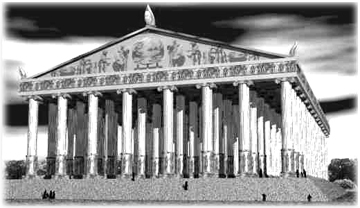
Temple of Diana in Ephesus - Christians were accused of robbing the Temple of Ephesus. It served as an underwriter for social welfare insurance and a central bank for at least the 127 countries which built the temple.
Were Christians actually bank robbers?
Or was something lost in translation?
The great historian of the period, Aristeides, defined Ephesus as "Asia's greatest center of trade and banking".[3]
- "The temple possessed valuable lands; it controlled the fisheries; its priests were the bankers of its enormous revenues. Because of its strength the people stored there their money for safe-keeping; and it became to the ancient world practically all that the Bank of England is to the modern world."[4]
“The temple was so rich and prosperous that it became, with the temple in Jerusalem, one of the world’s first banks.”[5] Read Investing in Diana.
Temple of Neptune (Hera)at Paestum
Minerva is one of three virgin goddesses along with Artemis and Hestia, known by the Romans as Diana and Vesta.
Minerva, the Roman goddess of wisdom peace and the arts which is why Guilds of Smith donated to the construction of her buildings.
The temple of Artemis
Pliny describes the temple as 377 feet (115 meters) long and 180 feet (55 meters) wide, made almost entirely of marble, making its area about three times as large as the Parthenon.
Prytanea or Vestal Temples
Prytaneum was a Court where the Senates or Council of a city met. as did the Sanedrim in the Temple of the Jews.
It was used in the performance of the obligations that belonged to the chief Magistrates of the City or State government.
These rulers often took on the responsibility of the Pontifex Maximus to insure the honesty of those who performed the charitable care of society in areas of health, education and welfare. They were overseers of the public trust like we see in the instances of Melchizedeck, Abraham or David as the overseer of the Porters of the temple and of course Jesus and the money changers.
In the Temple of Concord and Castor there were rooms cut in solid rock used as a repository of the treasury where it is said "that private citizens also deposited their money in the temple for safekeeping".[6]
Temples were places where public religion and worship occurred but to understand what that means you must understand what Religion was supposed to be.
Public religious ceremonies took place outdoors, and not within the temple building. Some ceremonies ended with a temple or shrine, where a ritual object might be stored and brought out for use, or where an offering would be deposited. Sacrifices, like animals, would take place at an open-air altar within the templum and were eaten at festivals or distributed to the poor as a part of the public social welfare in the case of public religion.
The real Church established by Christ must be the temple of Pure Religion. The temple of God is made of living stones who care about one another in the love of Christ. They function through charity while the Temples of the world force the contributions of the people under the authority of men like Cain and Nimrod.
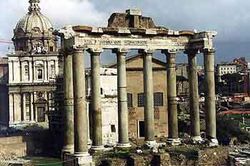
The Christian conflict with the people who persecuted them in the early days of the Church was mostly over their system of social welfare which was managed through their temples like Ephesus, Temple of Saturn and the Parthenon.
Romans had superstitions but they were practical people. They did not build without a purpose an a plan. Saturn was the god of agriculture. Agriculture needs calendars and records.
Temple of Nebo - Parents sent their children to the Temple of Nebo to receive their public education. Nebo was the Mesopotamian god of education, wisdom and oracles.
Eventually when the Roman State became the Benefactors of the people through its systems of welfare parents where required to register newborns (birth certificate) within 30 days at the Temple of Saturn so that everyone would know when the children reached the age to receive benefits.
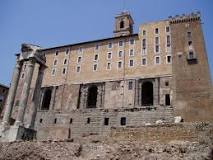
The first building for maintaining public records in Rome, including the law, was erected under the protection of the temple of Saturn, as early as 509 B.C. but was possibly burned by the Gauls in 309 B.C. Other buildings were used until 78 B.C. when they built the great Tabularium, on Capitoline Hill, below the Temple of Jupiter, which was the symbol of the sovereignty and power of Rome.
Jewish Temples
Temple of Herod - Those baptized into Herod's government went to Herod's temple to receive welfare and social security benefits. More on the two types of baptism.
LISHKAS HAGAZIS
Lishkas Hagazis was known as the Chamber of Hewn Stone It was the top of the Jewish legal system. It was their supreme court building. Here the Sanhedrin, seventy-one judges met. They dealt with the more difficult cases and was the court of final appeal in all matters of Jewish law. They also gave the final approval for a Jewish king to go to war, oversaw the function of the Temple and of course the temple was a government building.
Also read more on how Christians weren't registered in central government of the day.
The Christians depended on a Holy temple made of living stones which was a network of people living by the perfect law of liberty and faith, hope and charity. Those that had shared with those who had true needs.
Religion |
Pure Religion |
Private welfare |
Fleeing Religion |
False religion |
Public religion |
Our Religion |
Christian conflict |
Corban |
Baptism |
Benefactors |
That Word |
Daily ministration |
Modern Christians |
Diocletianic Persecution |
Christians check list |
gods |
Judge not |
Judge |
Fathers |
Deist |
Damnable heresies |
Factions at the altar |
Pharisees |
Sadducees |
Zealot |
Essenes |
Levites |
Messianic Judaism |
Menahem the Essene |
Sanhedrin |
Altars |
Clay and Stone |
Red Heifer |
Golden calf |
Freewill offerings |
Religion |
Pure Religion |
Public religion |
Christian conflict |
Paganism |
Denominations |
Dispensationalism |
Benefactors |
Corban |
Daily ministration |
Calendars |
Cult |
Imperial Cult of Rome |
Guru theories| |
Covet |
Merchandise |
Mark of God |
Mark of Cain |
Mark of the Beast |
Nature of the Beast
Section 666 |
Benefactors |
Biting one another |
Cry out |
Worship |
Church |
Temples |
Religious Orders |
Priests |
Kings and priests |
Hear |
Bible Index |
Network |
Economy |
Spiritual Economics |
Capitalism |
Socialism |
Divers lusts |
Business |
Kingdom Business |
Welfare |
Surety |
Temples |
Temple of Diana |
Temple in Jerusalem |
Seven Men |
Money Audio |
Real Money |
Money can be anything |
Debt Money |
Money as debt quotes |
Bitcoin |
Cashless |
Money |
I paid in |
Commodity money |
Value |
Mammon |
Covet |
Merchandise |
One purse |
Road Map |
Golden calf |
Temples |
Treasury |
Moneychangers |
The Bank of the Golden Calf | Study audio
Seven men |
Reserve fund |
Ephesus |
Tithe |
Sabbath |
Credit unions |
Thy first love |
HHC Money vs Mammon >
>Audio |
Conversion vs Reconversion >
>Audio |
See more Forbidden Definitions
== Footnotes ==
- ↑ Fiscus, from which comes the English term fiscal, was the name of the personal treasury of the emperors of Rome. The word is literally translated as "basket"
- ↑ Emperator was the Latin title meaning commander in chief and originally a ten year term of office.
- ↑ History of Ephesus
- ↑ from International Standard Bible Encyclopaedia, Electronic Database Copyright (c)1996 by Biblesoft
- ↑ Trinity College of Biblical Studies
- ↑ Ancient History pamphlets, Volume 3
About the author
Subscribe
HELP US at His Holy Church spread the word by SUBSCRIBING to many of our CHANNELS and the Network.
The more subscribers will give us more opportunity to reach out to others and build the network as Christ commanded.
Join the network.
Most important is to become a part of the Living Network which is not dependent upon the internet but seeks to form The bands of a free society.
You can do this by joining the local email group on the network and helping one another in a network of Tens.
His Holy Church - YouTube
https://www.youtube.com/user/hisholychurch
Bitchute channel will often include material that would be censored.
https://www.bitchute.com/channel/o6xa17ZTh2KG/
Rumble Channel gregory144
https://rumble.com/user/gregory144
To read more go to "His Holy Church" (HHC) https://www.hisholychurch.org/
Brother Gregory in the wilderness.
https://www.youtube.com/channel/UCJSw6O7_-vA4dweVpMPEXRA
About the author, Brother Gregory
http://hisholychurch.org/author.php
PreparingU - YouTube
https://www.youtube.com/channel/UC9hTUK8R89ElcXVgUjWoOXQ
Facebook
https://www.facebook.com/HisHolyChurch
